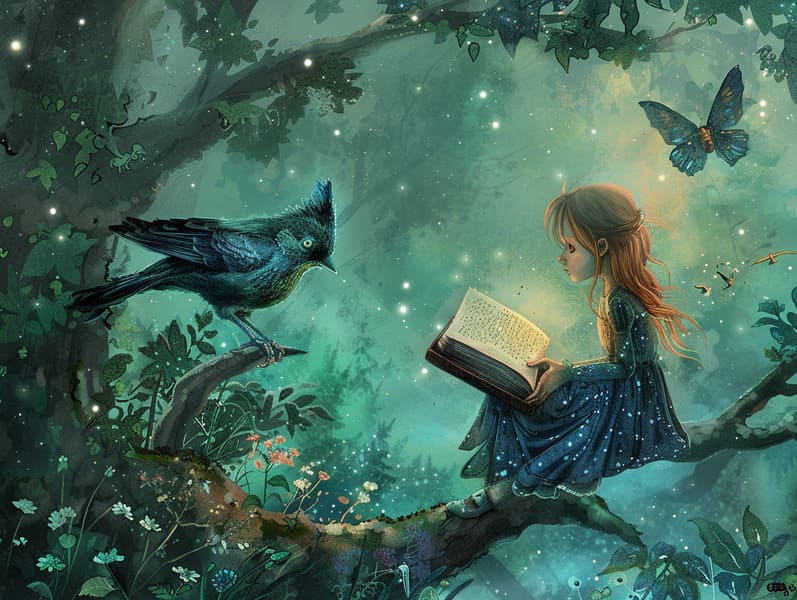The Beginning of Best Fairy Tales and the Unending Splendor.
The Beginning of Best Fairy Tales and the Unending Splendor.
Blog Article

Best fairy tales have enduring presence. These narratives have been relayed from one generation to the next long before they were ever published. They arose from a variety of societies, including European traditions. They were initially conveyed among elders, often carrying themes and messages pertaining to the societal norms and beliefs of the time.
The Brothers Grimm, Jacob and Wilhelm, were among the first to gather many of these beloved fairy tales. Their volume, "Grimm's Folk Tales," included narratives like "The Little Glass Slipper," "Little Brother and Little Sister," and "The True Story of Snow White," which have since become essentials in the world of iconic fairy tales. Similarly, Hans Christian Andersen's magical fairy tales, such as "The Mermaid," and "The Story of the Ugly Duckling," have enchanted hearts worldwide, securing their place in the pantheon of treasured fairy tales.
Though they are centuries old, these tales remain as relevant as ever, especially as nighttime stories for kids. These fantastical tales are now available in numerous formats, including vibrantly illustrated books, delightful animations, and online fairy tales.
Their continued relevance can be credited to several captivating elements:
Crucial Morals: Old fairy tales often present important moral lessons. Fairy tales like "The Story of the Boy Who Cried Wolf" teach the virtue of honesty, while "The Hare and the Tortoise" demonstrate the benefits of persistence and humbleness. These tales offer children clear distinctions between good and bad, building their moral compass in a mild yet significant way.
Kindness and Comprehension: Traditional fairy tales frequently feature heroines facing tests and troubles, inciting young listeners to empathize with their struggles and encourage their triumphs. For instance, "The Tale of Beauty and the Beast" illustrates the significance of looking past the exterior to acknowledge the inner spirit of a soul, enhancing perception and insight.
Cultural Perception: Many old fairy tales are rich in the cultural contexts from which they came. Immersing in these stories can provide illuminating insights into different social structures, advancing a sense of global respect and knowledge.
Fantasy and Innovation: The magical elements in old fairy tales—wizardry and magic—spark children’s creative thoughts. These tales move readers to magical realms, promoting creative dreams and click here a sense of awe that endures a lifetime.
Ancient fairy tales are not only alluring but also informative. They provide alluring tools in developing various mind and heart abilities in young ones. When classic fairy tales are read aloud, they advance verbal development by presenting new phrases and complicated sentence structures. This practice also cultivates hearing abilities and mindfulness, as little ones listen intently, expectant to see what happens next.
Furthermore, exploring the themes and characters of timeless fairy tales can nurture cognitive skills and analytical skills. The young are instructed to find patterns, make predictions, and grasp cause and effect. These debates also further kids speak out their thoughts and feelings, fostering their emotional intelligence.
In today’s electronic age, the existence of web-based fairy tales has made these fairy tales more attainable than ever. Websites and applications provide large libraries of old fairy tales that can be explored or listened via anytime, anywhere. Fairy tales recited are particularly in demand, presenting an interactive way for young ones to savor these charming stories. Read-aloud stories and read-out-loud videos take characters and settings to life, often augmented by bewitching musical scores and songs that amplify the narrative experience.
The unending appeal of old fairy tales lies in their ability to adjust to today's world while keeping their essential themes. Contemporary reinterpretations of these narratives often spotlight more diverse figures and modern settings, making them relatable to today’s audience. However, the fundamental themes of valor, warmth, and justice remain unchanged, continuing to affect kids of all ages.
Fairy tales also offer a sense of security and knowability. They serve a neat narrative with a obvious beginning, middle, and end, often concluding with the resolution of conflicts and the triumph of morality over immorality. This constancy can be relieving for young readers, sharing a sense of consistency in an unpredictable world.
Ancient fairy tales continue to captivate and train new generations, maintaining their delight and applicability in modern society. As children's bedtime stories, they showcase a perfect blend of allure and teaching, supporting moral values, empathy, and creativity. The proliferation of digital storybooks and the in demand status of fairy tales narrated warrant that these timeless fairy tales remain reachable to new generations.
By keeping and communicating these stories, we continue to cherish the rich tapestry of tales and cultural heritage. Whether you are seeing a artistically illustrated book, exploring a online collection, or hearing an narrated book, the allure of traditional fairy tales is always within reach. These stories emphasize of the continued strength of fairy tales and its ability to tie us across centuries and lands.
No matter if you are discovering a colorful picture book, perusing a web collection, or hearing an narrated book, the magic of Grimm's fairy tales is always within reach.
These narratives remind us of the ageless influence of fairy tales and its ability to unify us across eras and regions, making a tie that captivates and teaches alike.